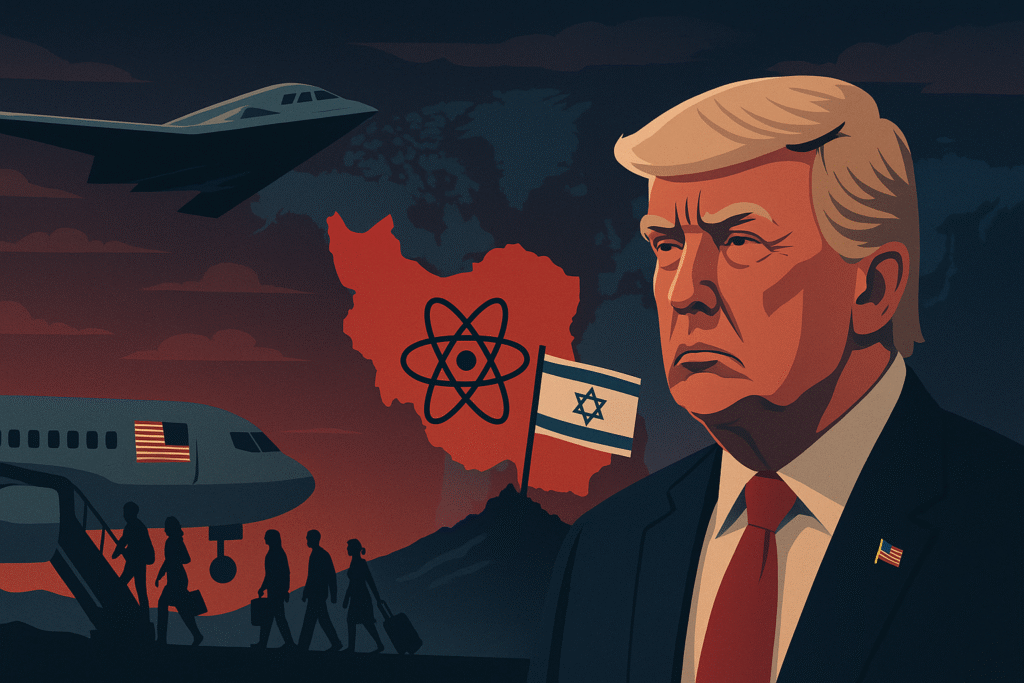The United States has moved several B-2 stealth bombers into the Pacific region amid growing tensions in the Middle East, as President Donald Trump weighs whether to involve the U.S. military in the ongoing conflict between Israel and Iran.
Strategic Deployment Amid Rising Tensions
According to flight trackers and sources familiar with the matter, multiple B-2 bombers have been deployed from Whiteman Air Force Base in Missouri to Andersen Air Force Base in Guam. The Pentagon has not confirmed the mission specifics but noted that such redeployments are part of readiness postures and deterrence efforts.
These bombers are equipped with “bunker-buster” munitions capable of penetrating fortified underground structures, including Iran’s deeply buried uranium enrichment facility in Fordow — a key site in the country’s nuclear program.
Trump Faces Critical Decision
White House officials say President Trump is expected to decide “within the next two weeks” whether to authorize U.S. strikes on Iran. The decision follows Israel’s surprise attack on Iran on June 13, which reportedly damaged significant portions of Iran’s air defenses and military leadership infrastructure.
Israeli officials, including Prime Minister Benjamin Netanyahu, have pushed for a broader offensive against Iran’s nuclear infrastructure. However, the U.S. would likely need to be involved for a successful strike on hardened sites like Fordow, which are beyond the capabilities of Israel’s current arsenal.
Evacuation and Escalation Measures
The U.S. State Department has begun evacuating American citizens and permanent residents from Israel, with additional plans to use cruise ships for larger civilian departures. Diplomats were the first to be airlifted out earlier this week. A national security meeting at the White House is scheduled for today to discuss next steps.
Global and Regional Reactions
Iranian Foreign Minister Abbas Araghchi warned that U.S. involvement would be “very, very dangerous for everybody.” Despite this, Israeli air dominance has severely restricted Iran’s ability to launch counterstrikes, and its Supreme Leader, Ayatollah Ali Khamenei, has remained largely out of the public eye.
Negotiations in Geneva, led by the UK, France, and Germany, have so far failed to produce a ceasefire. European diplomats have reportedly urged Iran to reconsider its refusal to negotiate with the U.S. while under Israeli attack, warning that American military involvement is a real and imminent possibility.
Disputed Intelligence and Political Messaging
President Trump has rejected recent statements by National Intelligence Director Tulsi Gabbard, who testified to Congress that Iran had not resumed its nuclear weapons program. Trump instead sided with Israeli assessments claiming Iran is weeks away from completing a bomb.
Gabbard later clarified on social media that, while Iran has not built a weapon, if it chose to do so, it could assemble one in “weeks to months.”
On Saturday, Israeli forces conducted another strike near Iran’s nuclear facility in Isfahan. Iranian media acknowledged damage at the site but reported no radiation leaks. Iran launched a retaliatory salvo of missiles and drones, most of which were intercepted. One drone did strike a residential home in northern Israel.
Outlook
With B-2 bombers in place, diplomatic channels faltering, and evacuation operations underway, Washington appears to be preparing for multiple scenarios—including the possibility of direct military action. The coming days may mark a critical turning point in the Iran-Israel conflict, with global implications hinging on Trump’s upcoming decision.
